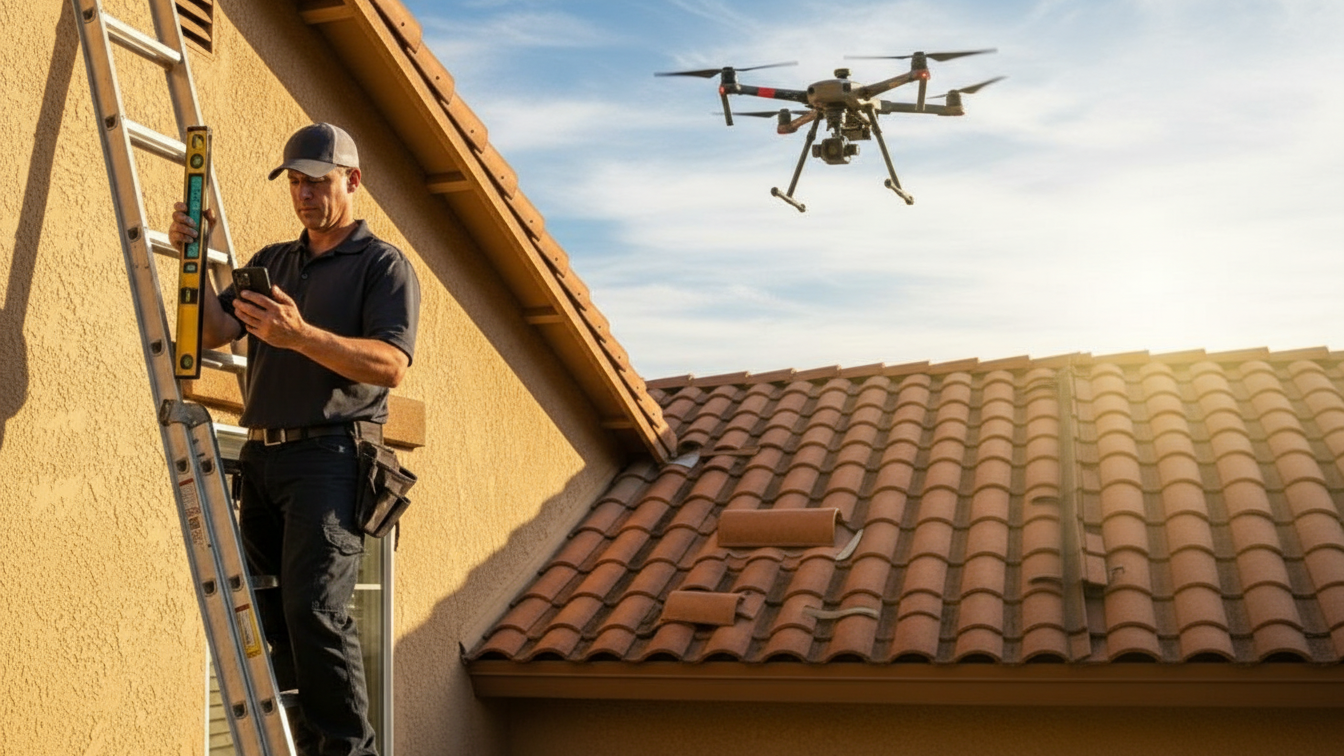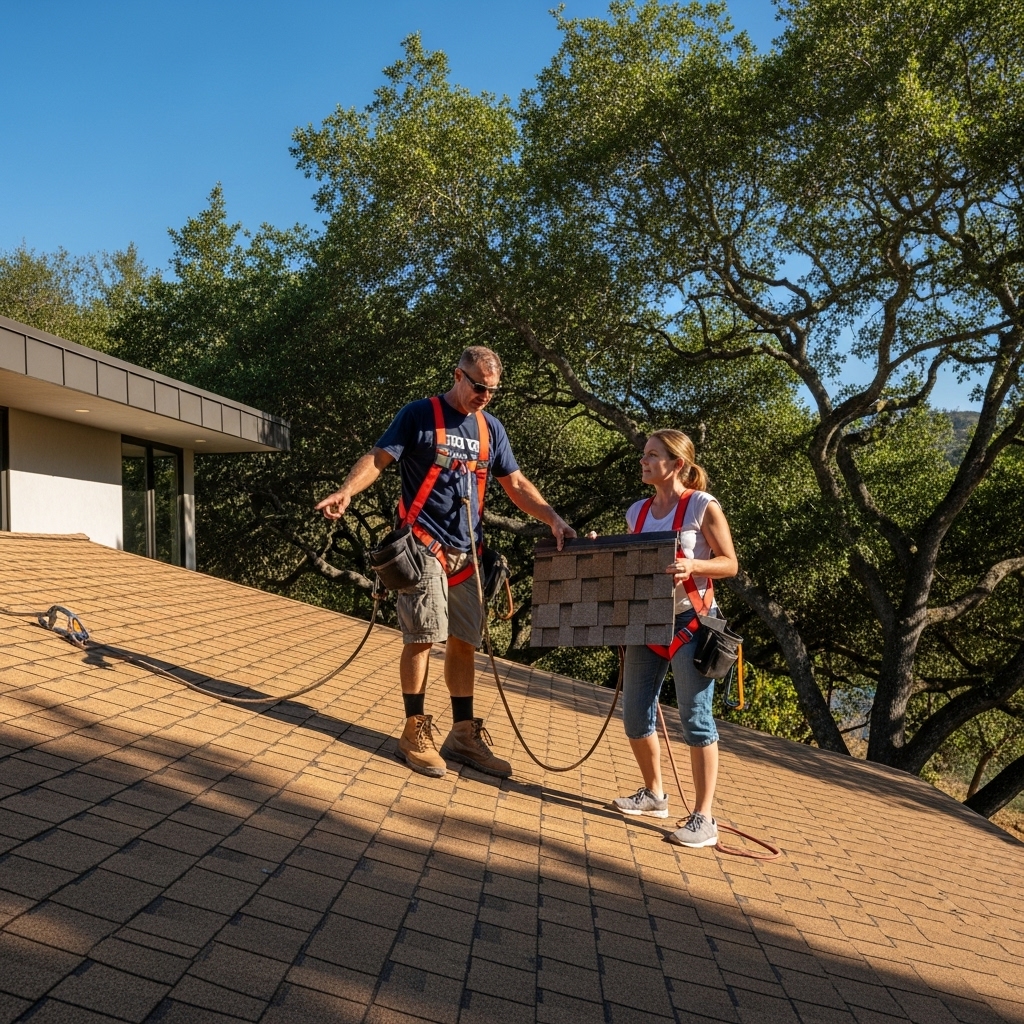When a ceiling stain appears or a drip bucket comes out in Oxnard, the first instinct is to look up and point to the spot directly above. With low-slope roofs, though, water rarely announces the true entry point so conveniently. Our coastal weather—foggy mornings, sunny afternoons, and the occasional spirited wind—can push water along seams and fastener rows before it shows inside. Understanding what happens during a professional leak repair visit will make the process smoother and the outcome stronger. Whether your building is near the harbor or inland along Rice Avenue, a good plan starts with a calm assessment and a clear path to a durable fix. If you are new to this process, here is what to expect when you call in a local crew experienced in flat roofing leak repairs.
The first step is information gathering. If you have photos of the interior leak, notes on when it occurs, or a history of past issues, share them. Patterns matter: does it leak only during wind-driven rain, or do you see drips after foggy mornings? Does the stain grow after storms, or is it constant? Those details point technicians toward likely pathways and tell them whether to plan for water testing or focus on known trouble spots like penetrations and drains. A quick conversation before mobilizing saves time on the roof.
On site, safety and protection come first. Crews verify secure access, set tie-off points if needed, and protect interior areas under the leak with poly and catch buckets. In Oxnard, breezes can change quickly, so materials and tools are staged so nothing migrates during a gust. The aim is to work methodically without introducing new risks. Building staff are kept informed about where technicians will be, for how long, and what to expect in terms of noise and movement.
Diagnosis begins with a structured walkthrough. Technicians look for surface clues—stains, dirt tracks where water has flowed, lifted seams, punctures, and degraded flashing. Drains and scuppers are checked for debris that could have held water long enough to challenge a seam. If the roof is a thermoplastic membrane like TPO or PVC, seams are probed and suspect areas tested with gentle heat to evaluate integrity. On modified or built-up systems, blisters and splits are mapped and prioritized. The team also considers how equipment curbs and skylights interact with the membrane, since those transitions are common entry points.
Sometimes the source is obvious, and repair can begin immediately. A puncture near a walkway, a split at a corner, or a loose clamp on a vent can be corrected with compatible materials and careful technique. Other times, the leak is elusive. In those cases, technicians may use moisture meters to identify wet insulation or thermal imaging after a sunny afternoon to spot areas where trapped water holds heat longer. If needed, controlled water testing isolates suspect zones by soaking sections in sequence and observing the interior while the roof remains protected.
Once the path is known, the repair is tailored to the membrane and the conditions on the day. For TPO and PVC, that often means cleaning, priming where required, and heat-welding patches with the right overlap and pressure. On modified bitumen, compatible mastics and plies are used to rebuild the area, with reinforcement at corners and edges. Edges and terminations get special attention because wind uplift around Oxnard can exploit any weakness. The crew verifies drainage near the repair and clears debris so water moves away from the area after the next rain.
Interior communication continues during the repair. If a more involved fix is necessary—say removing and replacing wet insulation—the team explains the steps, sets expectations for noise or duration, and coordinates with building operations. In cold storage or food facilities, for example, repairs near intakes may be scheduled during off-hours to avoid any odor concerns. Medical and educational buildings get similar consideration. The aim is to keep the building functioning while the roof is restored.
Temporary measures are sometimes appropriate. If weather is closing in and the permanent repair would leave the roof vulnerable, a temporary dry-in keeps water out until the right conditions return. The key is prompt follow-up; leaving a temporary patch in place too long can trap moisture or allow the problem to migrate. A trustworthy contractor will propose a two-step plan and schedule the return visit at the outset.
Quality control is built into the process. After the repair, seams are probed, patches are inspected, and the area is cleaned. Technicians often run a light water test to confirm performance, especially around drains and penetrations. Documentation includes photos and notes on materials used, which helps with warranty continuity and gives you a record for future maintenance. You should also receive guidance on any nearby conditions worth watching and simple preventive steps to support the repair.
Expect some discussion of roof housekeeping. Many leaks begin with preventable issues—blocked drains, debris that holds moisture against the membrane, or damage from foot traffic and tools. A quick cleanup during the visit, plus recommendations for walk pads or access routes, reduces the chance of repeat leaks. If your building hosts frequent rooftop activity, a maintenance schedule paired with access protocols will pay dividends.
In Oxnard, weather timing really is everything. Fog can keep surfaces damp into late morning, and evening dew often arrives before sunset, compressing the repair window for work that requires dry conditions. Wind adds another layer. An experienced crew sequences tasks around these constraints, tackling detail work while surfaces dry and moving to heat-welding or adhesive steps when the window opens. If a forecast looks uncooperative, a transparent reschedule protects the repair quality and your building.
When underlying moisture is discovered, the conversation turns from patching to restoration in that specific area. Removing wet insulation and drying the deck may take additional time, but it prevents repeated leaks and hidden deterioration. The best outcomes come from addressing the whole pathway, not just the point where water finally appeared inside. Your technician should be clear about what is being removed, what is going back in, and how the area will be tied into the existing membrane.
After the repair, a short debrief brings closure. You should know what caused the leak, what was done to correct it, and what to monitor. If a follow-up visit is planned—perhaps to torch in additional reinforcement or to return after rain for verification—that date is set. A calm, complete handoff is as much a part of a successful repair as the patch itself.
Beyond the immediate fix, consider how your roof is managed. A log of access, photos of repairs, and seasonal checks make the next leak less likely and the next diagnosis faster. The reality in Oxnard is that our roofs age under a predictable cycle of moisture and sun; aligning your maintenance with that cycle puts you ahead of problems rather than chasing them after every storm.
How long does a typical leak repair take?
Simple, localized repairs can often be completed in a single visit, especially when the source is clear and the weather cooperates. More involved work—such as removing wet insulation, rebuilding details, or coordinating around building operations—takes longer and may be scheduled in phases. Your crew should outline a timeline once the diagnosis is complete.
Will leak repairs disrupt my tenants or operations?
Most repairs are staged to minimize disruption. Noise is usually light and localized. If adhesives or primers with odors are necessary, crews coordinate around air intakes or schedule during off-hours. Clear communication with tenants and staff helps everyone know what to expect and reduces surprises.
Can I handle small leaks myself?
It is tempting to apply a quick sealant, but mismatched products can do more harm than good, especially on TPO and PVC. DIY patches often fail to address the real pathway and can complicate future repairs. Document the problem, protect interior areas, and call a professional for a diagnosis that targets the root cause.
Why do leaks sometimes show up far from their source?
Low-slope roofs can transport water along seams, fastener rows, or deck flutes. Wind-driven rain and the roof’s slope-to-drain can move water laterally before it finds a path inside. That is why methodical tracing, sometimes aided by thermal imaging or water testing, is essential to find the true entry point.
What can I do to prevent future leaks?
Keep drains and scuppers clear, control rooftop access to protect the membrane, and schedule seasonal inspections. Address small defects when they appear, and coordinate with other trades so penetrations and equipment changes are properly flashed. A bit of attention ahead of storms goes a long way toward a dry interior.
If a leak has you looking for fast, reliable help, connect with a local team that understands Oxnard’s weather and building stock. From diagnosis to final inspection, you will get clear communication and durable work that respects your operations. For responsive service and repairs that stand up to salt air, sun, and wind, reach out today to schedule expert flat roofing leak repair and get your building back to normal.






